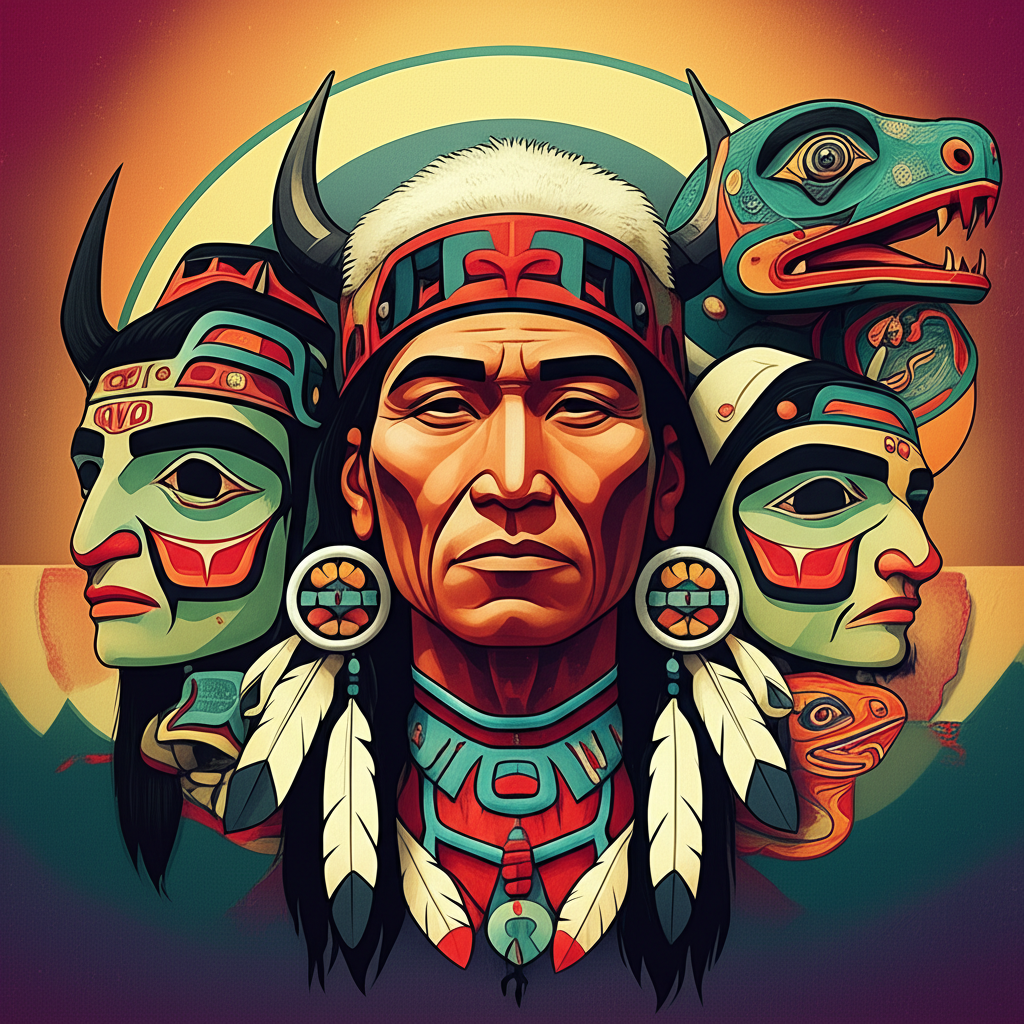
Introduction:
The realm of human imagination knows no bounds, and throughout history, different cultures have crafted intricate stories and legends to explain the world around them, impart wisdom, and preserve their heritage. Among these stories are the tales of White Buffalo Calf Woman in the Great Plains, the Horned Serpent found in various indigenous cultures across North America, and the powerful serpent beings of the Pacific Northwest. These figures, though distinct in their specific details and cultural contexts, share fascinating echoes and symbolic resonances. This article delves into these myths, exploring their origins, narratives, symbolic meanings, and modern interpretations, remembering always that these are stories – powerful and meaningful stories – but stories nonetheless, born of the human desire to understand and connect with the world.
Origins and Cultural Background:
To understand these figures, we must step back in time and immerse ourselves in the cultural landscapes that birthed them.
-
White Buffalo Calf Woman: Originating from the Lakota and other Plains tribes, the story of White Buffalo Calf Woman emerged within a society deeply connected to the land, buffalo, and spiritual practices. The Lakota worldview emphasized the interconnectedness of all living things and the importance of maintaining balance in the natural world. The buffalo was not merely a source of sustenance but a sacred animal, embodying abundance and life.
-
Horned Serpent: Tales of horned or plumed serpents appear in many Native American cultures, from the Southeast to the Great Lakes, and even down to Mesoamerica. Each nation had its own name and unique characteristics for the serpent, but the common thread was its connection to water, power, and sometimes, chaos. These stories arose from a time when humans lived closely with nature, observing the patterns of rivers, storms, and celestial events.
-
Pacific Northwest Serpent Beings: The indigenous peoples of the Pacific Northwest, including the Haida, Tlingit, and Coast Salish, lived in a region of dramatic landscapes, rich in resources from both the sea and the forests. Their societies were often organized around complex social structures, with strong artistic traditions expressed through totem poles, carvings, and elaborate ceremonies. Serpent figures, often associated with the sea and rivers, played important roles in their mythology, representing power, transformation, and the mysteries of the natural world.
Character / Creature Description:
-
White Buffalo Calf Woman: She is often depicted as a beautiful woman dressed in white buckskin, carrying a sacred pipe. She is not merely a woman but a divine messenger, a bringer of sacred knowledge and spiritual guidance. The white buffalo calf itself is a symbol of purity, abundance, and the fulfillment of prophecy.
-
Horned Serpent: This creature is described as a gigantic serpent, often adorned with horns or antlers. It is a powerful and sometimes dangerous being, associated with water, storms, and the earth’s energy. The horns symbolize power and authority, while the serpent form connects it to the primal forces of nature.
-
Pacific Northwest Serpent Beings: These beings take various forms, sometimes appearing as giant serpents with human-like faces, or as sea monsters with serpentine bodies. They are guardians of the waters, possessors of great power, and often associated with both creation and destruction. Their scales might shimmer with iridescent colors, reflecting the vibrant life of the coastal environment.
Main Story / Narrative Retelling:
White Buffalo Calf Woman: Long ago, in a time of great hardship, the Lakota people were starving and despairing. Two young hunters went out in search of food, but found nothing. Suddenly, a beautiful woman appeared before them, dressed in white buckskin. One of the hunters, overcome by lust, approached her with impure thoughts, and a dark cloud engulfed him, leaving only bones. The other hunter, filled with awe and respect, was spared. The woman revealed herself as White Buffalo Calf Woman and instructed him to return to his people and prepare for her arrival. She came bearing a sacred pipe, teaching the Lakota people the seven sacred rites, including the keeping of the soul, the sweat lodge ceremony, vision quest, sun dance, making relatives, and girls’ puberty rite. She taught them how to pray, how to live in harmony with the earth, and how to respect all living things. As she departed, she transformed into a white buffalo calf, symbolizing the return of abundance and the promise of a renewed way of life.
Horned Serpent: In the legends of many tribes, the Horned Serpent appears as a powerful guardian of the waters. In one story, a young warrior sought to prove his courage by battling the Horned Serpent that dwelled in a deep lake. He prepared himself through fasting and prayer, and when he finally confronted the serpent, he did not attack, but instead offered it respect and reverence. The Horned Serpent, touched by the warrior’s humility, gifted him with knowledge and power, teaching him the secrets of healing and the ways of the natural world.
Pacific Northwest Serpent Beings: Among the Haida, there is a tale of a giant sea serpent that lived in the depths of the ocean. This serpent was both feared and respected, for it controlled the abundance of the sea. One day, a young fisherman, lost in a storm, was pulled beneath the waves. He found himself in the serpent’s lair, where he was treated with kindness. The serpent taught him the secrets of the ocean currents and the movements of the fish, and when the fisherman returned to his village, he shared his knowledge, bringing prosperity to his people.
Symbolism and Meaning:
These stories, while unique in their specific details, share common threads of symbolism and meaning. They represent:
- Connection to Nature: All three figures are deeply connected to the natural world, embodying the power and mystery of the land, water, and animals.
- Transformation: The appearance of White Buffalo Calf Woman as a buffalo calf, the Horned Serpent’s ability to bestow gifts, and the Pacific Northwest serpent beings’ role in both creation and destruction all highlight the theme of transformation and the cyclical nature of life.
- Balance and Harmony: These stories emphasize the importance of maintaining balance in the natural world and living in harmony with all living things. Disrespecting the natural world, as shown in the tale of White Buffalo Calf Woman, can have dire consequences.
- Spiritual Guidance: White Buffalo Calf Woman serves as a divine messenger, bringing sacred knowledge and spiritual guidance to the Lakota people. The Horned Serpent and the Pacific Northwest serpent beings can also offer wisdom and power to those who approach them with respect.
Modern Perspective:
Today, these myths are interpreted in various ways. They appear in literature, movies, and games, often serving as symbols of indigenous identity, environmental awareness, and spiritual connection. Cultural studies examine these stories as valuable sources of information about the beliefs, values, and worldviews of ancient cultures. Indigenous artists and storytellers continue to draw inspiration from these myths, reinterpreting them for contemporary audiences and ensuring their continued relevance.
Conclusion:
The stories of White Buffalo Calf Woman, the Horned Serpent, and the serpent beings of the Pacific Northwest are powerful testaments to the human imagination and the enduring power of storytelling. They remind us of the deep connection that ancient cultures had with the natural world and the importance of preserving cultural heritage. These are cultural stories, passed down through generations, and are not meant to be believed or worshipped as divine powers.
As Muslims, we recognize that only Allah is the true Creator and Sustainer of the universe. These stories, while not part of our religious belief, offer valuable insights into the rich tapestry of human culture and the enduring power of the human imagination. May we always appreciate the beauty of storytelling and the importance of preserving our cultural heritage while remaining steadfast in our faith and belief in Allah alone.





